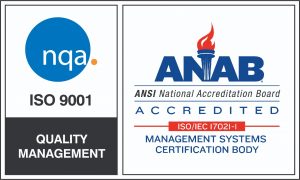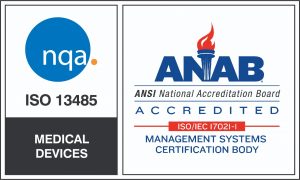 Electronics manufacturers must take necessary precautions to ensure nothing goes wrong with finished products. This is especially important for manufacturers creating devices for the medical, aerospace, and defense industries. Even devices made for other industries require careful assembly if manufacturers wish to avoid costly rebuilds, repairs, and recalls.
Electronics manufacturers must take necessary precautions to ensure nothing goes wrong with finished products. This is especially important for manufacturers creating devices for the medical, aerospace, and defense industries. Even devices made for other industries require careful assembly if manufacturers wish to avoid costly rebuilds, repairs, and recalls.
In order to ensure proper operation of all parts and components, electronics manufacturers must continuously test throughout production. Using a wide range of tests at different parts of the process helps ensure the quality and reliability of all finished products.
One of the most commonly used tests, in-circuit testing (ICT), helps ensure contract manufacturers and OEMs consistently meet defined parameters during production. ICT provides valuable information about problems with the board. This can prove extremely beneficial as most issues with electronic devices occur because of short circuits, wrong components, and open circuits on the board.
How it Works
ICT relies on a special test fixture, commonly referred to as “bed of nails” because it contains multiple contact pins. The contact pins come in contact with circuit nodes on the printed circuit board (PCB) to measure performance of the components. ICT allows contract manufacturers to measure various parameters including resistance, capacitance, and the operation of analog components. ICT is also sometimes used to measure functionality of digital circuits. However, full testing of circuit functionality isn’t usually feasible due to circuit complexity.
Benefits of ICT
When performed correctly, ICT can catch around 98% of faults with the board. Test results provided by ICT are easy to interpret. This makes it possible for manufacturers of all skillsets to locate problems quickly. Programming an in circuit tester is extremely easy. Electronics manufacturers can use information provided in the PCB layout to generate most of the program.
Disadvantages of ICT
Although ICT remains one of the most popular printed circuit board testing methods, it’s not without its disadvantages. As the size of components shrink, it’s becoming more difficult for manufacturers to gain access to all nodes on the board. This can lead to unreliable test results.
Contract manufacturers and OEMs must rely on a number of different testing methods to ensure the quality of finished products. This is especially important for those responsible for the creation of potentially life-saving products. Although ICT provides an effecting method for testing PCBs, it’s important that electronics manufacturers use additional tests to determine the quality and reliability of circuit boards.
 Box-build, or system integration, is an electromechanical assembly process which includes enclosure fabrication, installation and routing of cabling or wire harnesses, and installation of sub-assemblies and components. A complex box-build includes a fully integrated electro-mechanical system with pneumatics and electronics.
Box-build, or system integration, is an electromechanical assembly process which includes enclosure fabrication, installation and routing of cabling or wire harnesses, and installation of sub-assemblies and components. A complex box-build includes a fully integrated electro-mechanical system with pneumatics and electronics. The Internet has created numerous opportunities for entrepreneurs and small businesses to sell their products to people around the world. While selling products online can bring significant income, many businesses simply do not know how to meet extremely high consumer demand.
The Internet has created numerous opportunities for entrepreneurs and small businesses to sell their products to people around the world. While selling products online can bring significant income, many businesses simply do not know how to meet extremely high consumer demand. Many electronics companies outsource some or all parts of production. This probably has something to do with the high cost of in-house production. Even if a company can manage the cost of equipment, people, and the technology needed to produce products themselves, it’s extremely difficult to keep up with rising consumer demand for quality electronics. Unfortunately, releasing just one poor quality device could negatively impact company reputation and the ability to obtain a steady flow of repeat and new business.
Many electronics companies outsource some or all parts of production. This probably has something to do with the high cost of in-house production. Even if a company can manage the cost of equipment, people, and the technology needed to produce products themselves, it’s extremely difficult to keep up with rising consumer demand for quality electronics. Unfortunately, releasing just one poor quality device could negatively impact company reputation and the ability to obtain a steady flow of repeat and new business. Different companies have different needs. When selecting a contract manufacturer, it’s important to consider these needs as well as any future requirements. Although you might not have any immediate plans to move into new markets, this might change as your business grows. Make sure you choose a CM that can grow and scale with your business needs.
Different companies have different needs. When selecting a contract manufacturer, it’s important to consider these needs as well as any future requirements. Although you might not have any immediate plans to move into new markets, this might change as your business grows. Make sure you choose a CM that can grow and scale with your business needs.

